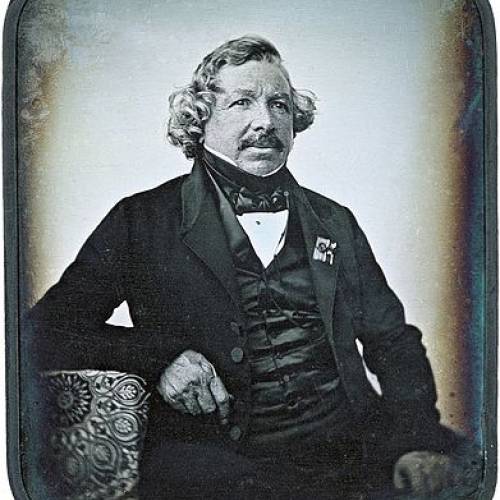Portrait photography has had a long and varied history since Louis Daguerre introduced the photographic process in 1839. In that same year, Robert Cornelius produced what’s considered the first photographic self-portrait. Photography has served many purposes, mainly to commemorate occasions and periods in history. Early photographic portraits followed the conventions of the painted portrait. With traditional backdrops used in painting, early photographic portraits indicated a person’s societal status or occupation through clothing, setting or the surrounding objects.
Louis Daguerre France
(1787 – 1851) UK
Louis-Jacques-Mandé Daguerre was a French artist and photographer, recognized for his invention of the eponymous daguerreotype process of photography. He became known as one of the fathers of photography. On January 7, 1839, members of the French Académie des Sciences were shown products of an invention that would forever change the nature of visual representation: photography. The astonishingly precise pictures they saw were the work of Louis-Jacques-Mandé Daguerre (1787–1851), a romantic painter and printmaker most famous until then as the proprietor of the Diorama, a popular Parisian spectacle featuring theatrical painting and lighting effects. Each daguerreotype (as Daguerre dubbed his invention) was a one-of-a-kind image on a highly polished, silver-plated sheet of copper.

Henry William Fox-Talbot
(1800 – 1877) UK
William Henry Fox Talbot was an English scientist, inventor and photography pioneer who invented the salted paper and calotype processes, precursors to photographic processes of the later 19th and 20th centuries. He was also an accomplished mathematician involved in the research of light and optics and as a result he invented the polarizing microscope. He was also politically active and a Member of Parliament In this early technique of photography, a sheet of paper coated with silver chloride was exposed to light in a camera obscura; those areas hit by light became dark in tone, yielding a negative image.

Herb Ritts
(1952-2002) US
Herb Ritts’ work concentrated on black and white photography and portraits, often in the style of classical Greek sculpture, which emphasized the human shape. Ritts prominently photographed celebrities in various locales throughout California. He also took many fashion and nude photographs of fashion models Naomi Campbell, Stephanie Seymour, Tatjana Patitz, Christy Turlington, and Cindy Crawford, including “Tatjana, Veiled Head, Tight View, Joshua Tree, 1988. The first video he directed was Madonna in “Cherish” in 1989. In 1991, he won two MTV Video Awards for his work on music videos by Janet Jackson and Chris Isaak.











































































































